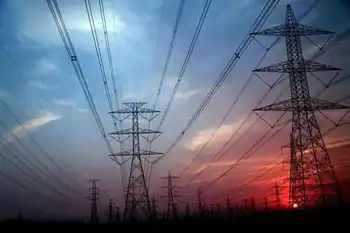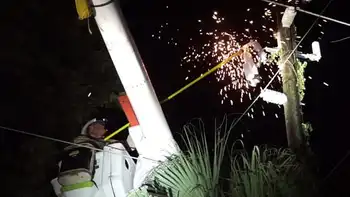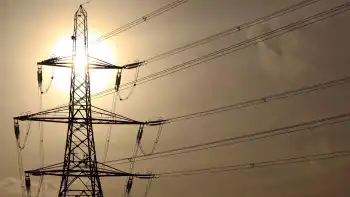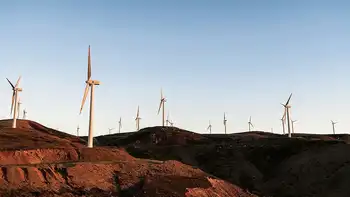Utility towers protested in Santa Clarita
By LA Daily News
High Voltage Maintenance Training Online
Our customized live online or in‑person group training can be delivered to your staff at your location.

- Live Online
- 12 hours Instructor-led
- Group Training Available
"I feel like I am living in an industrial center, not a suburban, residential environment," said Smith, 64.
Smith is one of more than 100 seniors who are fighting with Southern California Edison to have the towers removed and replaced with smaller, less obtrusive poles.
The structures are far larger, they say, than what they expected Edison would build when state officials first approved the project.
But it's a request Edison says it can't fill because the smaller tubular steel poles just aren't feasible in the area.
More than 100 residents staged a rally inside their gated community to protest the towers.
Santa Clarita Mayor Bob Kellar and Los Angeles County Supervisor Michael Antonovich fired off a letter to Edison's chairman and chief executive officer, Alan J. Fohrer, asking that the towers be removed.
"The lattice steel towers create significant visual blight and are in direct contrast to commitments made by (Edison) to the residents of the Santa Clarita Valley," according to the letter.
But Southern California Edison spokesman Steve Conroy said no such commitments were made to the Santa Clarita community.
The poles were an option, he said, but they won't work.
"The steel tubular poles were not technically feasible in order to complete this project to meet reliability and engineering design criteria associated with a project of this scale," Conroy said.
The project — called the Antelope-Pardee Transmission Line Project — will eventually transmit power generated by wind and solar projects from Tehachapi to the Inland Empire.
When the California Public Utilities Commission approved the project in 2007, it specified that Edison would use the poles in Santa Clarita, unless the company could show it wasn't feasible, said Andrew Kotch, a commission spokesman.
Last January, Edison submitted a report to the commission declaring that the poles weren't feasible and the commission allowed the towers to be used in Santa Clarita, Kotch said.
Hunt Braly, an attorney for the Belcaro residents, says the commission's staff approved the towers with no peer review and no independent engineering study.
Plus, the citizens, who had relied on the belief that poles would be used, were not notified, Braly said. In an April letter from Edison notifying residents about impending construction, there was no mention of the type of structures that would be built, he said.
"They don't know until the monstrosities begin to be built, which is about a month ago," Braly said.
Belcaro homeowners talk about little else, said 72-year-old resident Maynard Davis.
Davis says he can see several towers from his home.
"It has taken over our lives here," he said. "Absolutely."
He and his wife Judy moved from Burbank about four years ago and invested their life savings into their Santa Clarita home, in the hopes of leaving a nest egg for their children and grandchildren. Now, he says, no one will buy his home.
"That's our legacy," Davis said. "And, it's gone."











